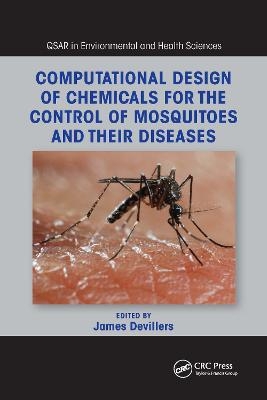
Computational Design of Chemicals for the Control of Mosquitoes and Their Diseases
CRC Press (Verlag)
978-1-032-33927-6 (ISBN)
There is a compelling need for new drugs and efficient treatments against mosquito-borne diseases. Environmentally safe, but effective insecticides that address the problems of resistance are required. Computational Design of Chemicals for the Control of Mosquitoes and Their Diseases explains how the search for new substances effective against mosquitoes and their diseases has benefited from the use of in silico techniques. QSAR modeling is suited to identify the key structural features and/or physicochemical properties explaining an activity and to propose candidate molecules for further evaluation by laboratory tests. Homology modeling is useful to approximate the 3D structure of proteins of interest. Pharmacophore modeling is a powerful means to capture the chemical features responsible for an activity and to identify new potentially active compounds via the virtual screening of databases. Fugacity modeling and a wealth of other modeling paradigms are useful for risk assessment in vector borne disease control.
PhD in ecotoxicology (1987, University Lyon I, France). Head of CTIS. Publications: 245 peer-reviewed papers and book chapters. 15 authored/edited books. Founding editor (1993) and editor-in-chief (1993 to present) of the journal SAR and QSAR in Environmental Research (Gordon & Breach Science Publishers and now Taylor & Francis). Co-Editor of the journal Toxicology Methods (Taylor & Francis, 1997 to 2002). Member of the editorial board of: Journal of Biological Systems (World Scientific, 1995 to 1997). Toxicology Mechanisms and Methods (Taylor & Francis, 2002 to 2009). Current Bioactive Compounds (Bentham Science Publishers, 2007 to 2014). Ecological Modelling (Elsevier, 1996 to present). Xenobiotica (Informa Healthcare, 1995 to present). Toxics (MDPI AG, 2013 to present). Organization or co-organization of 14 international meetings.
Contents. Series Introduction. Acknowledgments. Contributors. Chapter 1 Repurposing Insecticides and Drugs for the Control of Mosquitoes and their Diseases. Chapter 2 Insect Olfactory System as the Target for Computer-Aided Design of Mosquito Repellents. Chapter 3 OBP-Structure-Aided Repellent Discovery: An Emerging Tool towards the Prevention of Mosquito-Borne Diseases. Chapter 4 Molecular Topology as a Powerful Tool for Searching new Repellents and Novel Drugs against Diseases Transmitted by Mosquitoes. Chapter 5 Pharmacophore modeling applied to mosquito borne diseases. Chapter 6 Comparative MIA-QSAR Proteochemometric Analysis of NS3 Protease Substrates in Dengue Virus. Chapter 7 Mosquito-Active Cry d -Endotoxins from Bacillus thuringiensis subsp. israelensis: Structural Insights into the Toxin-Induced Pore Architecture. Chapter 8 Structural Scaffolding for New Mosquito Larvicides. 9 SAR and QSAR Modeling of Structurally Diverse Juvenoids Active on Mosquito Larvae. Chapter 10 SAR predictions of benzoylphenylurea chitin synthesis inhibitors active on larvae of Aedes aegypti. Chapter 11 Predicting the toxicity of piperidines against female adults of Aedes aegypti. Chapter 12 Molecular modeling studies of the inhibition by natural compounds of a mosquito detoxification system, implication in mosquito vector control. Chapter 13 Critical review of models for exposure assessment of residents and bystanders to adulticides used in mosquito control. Chapter 14 Occupational exposure scenarios and modeling in vector control. Chapter 15 Use of insecticides indoor for the control of mosquitoes: Exposure scenarios and modeling. Index
| Erscheinungsdatum | 14.06.2022 |
|---|---|
| Reihe/Serie | QSAR in Environmental and Health Sciences |
| Zusatzinfo | 15 Illustrations, color; 315 Illustrations, black and white |
| Verlagsort | London |
| Sprache | englisch |
| Maße | 156 x 234 mm |
| Gewicht | 489 g |
| Themenwelt | Medizin / Pharmazie ► Medizinische Fachgebiete ► Pharmakologie / Pharmakotherapie |
| Naturwissenschaften ► Biologie | |
| ISBN-10 | 1-032-33927-6 / 1032339276 |
| ISBN-13 | 978-1-032-33927-6 / 9781032339276 |
| Zustand | Neuware |
| Haben Sie eine Frage zum Produkt? |
aus dem Bereich


